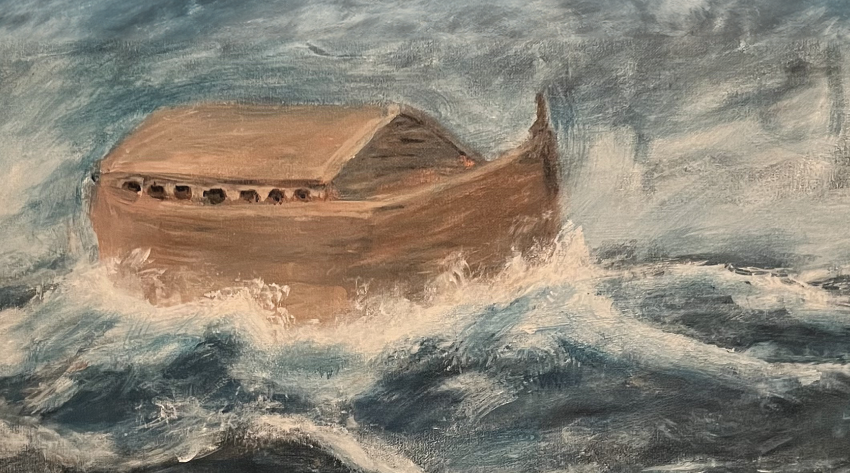
Collateral organization is one term that has been used to label these unique relations-based containers. The collateral organization is established on a short-term basis. It is set up a way that enables members of the organization to relate to one another in a new manner—hopefully reducing the anxiety associated with the issues being addressed and creating conditions for metabolism of these issues. We will have much more to say about collateral organizations in Chapter Nine.
Special Events as Containers of Anxiety: Psychological containers can be engaged through the structuring of time intervals. There is a temporal demarcation. Now is the time for . . . something different. The 50-minute hour in psychotherapy, for instance, is an important container (especially in the containment of anxiety aroused during a therapy session). During much of the 20th Century we lived with the temporal container called the 9 to 5 workday, the 5-day work week, and the non-working weekend and vacation. With the introduction of the computer, internet and home office, this temporary container has often been eliminated.
Many years ago, Matthew Miles identified the important role played by temporary systems in 20th Century society.[xii] These temporary systems might be particularly important to engage in our VUCA-Plus world. Miles suggested that temporary systems are to be found throughout our society but are often given very little attention. Examples of temporary organizational systems that Miles offered include carnivals, theater, celebrations, games, retreats, workshops, conferences, task forces, project teams, coffee breaks, and office parties. At a more personal level, Miles identified love affairs and psychotherapeutic sessions as temporary systems.
The time-delineated container can thus be a specific event (such as Marti Gras or New Years Eve at Time Square). This often is an event that allows us to act in new ways—ways that defuse our anxiety or at least provide us with the opportunity for a short period of time to escape from our imagined lions. The event can actually be a ceremony or ritual that takes us to another plane – what Victor Turner described as a threshold experience (a state of “liminality”).[xiii] This can be a graduation ceremony, a wedding, a Bar Mitzvah or a birthday party. The real lions in our life are set aside for a short while—so that we might celebrate our success in defeating past lions or moving into a new life stage that will enable us to do a better job of confronting lions.
Building on the work of Victor Turner, Mihaly Csikszentmihalyi identifies temporary settings that provide the unique threshold between boredom (lack of challenge), on the one hand, and anxiety (too much challenge) on the other hand. He identified this threshold experience as “flow.”[xiv] He suggests that flow can be found in the many enthralling moments we have all experienced as rock climbers, jazz musicians or chess players. We can even experience a “micro-flow” when twirling a pencil or paper clip in our hand during a particularly boring meeting. If we were to blend Csikszentmihalyi with Bion, the outcome might be a suggestion that Flow is found in a contained experience and that flow provides a metabolism for the person living temporarily in this threshold between boredom and anxiety.
Location as a Container of Anxiety: A psychological container can be a sanctuary located in physical space. These containers have physical boundaries. We enter a safe space – such as a walled garden or therapy office and feel safe. Donald Winnicott identified something he called play space in which we safely search for a new and clearer sense of self.[xv] This is the place where (as children) we built forts or constructed family narratives (often in a doll house) as children.
Play space is created in therapeutic settings where art, dance or drama are engaged – or where children (or adults) manipulate various objects and create stories in a sand tray. These settings serve as play space containers and create conditions for effective metabolism of anxiety-saturated issues in our lives (or the lives of our children).
Containers can be structures—ranging in size from trunk in which memorable objects are kept, to a special room in our home (such as a “man/woman cave), to a majestic, sacred cathedral. The location-based container often serves as a retreat—a “safe place” within or outside the organization. Some Japanese firms, for instance, provide private rooms where employees can go to let loose their frustrations and anger. However, sanctuaries (almost by definition) usually exist outside of an organizational context. They are found in remote locations, hallowed grounds, beautiful settings or formally constructed retreat centers, spas and health resorts.
Leadership as a Container of Anxiety: The fifth way in which metabolism takes place in an organization can be traced directly to the leadership of the organization. This fifth type of container begins to move us into the realm of metabolism—for the leader (like the parent), according to Bion, often plays a key role in the metabolism of anxiety. It is the leader who must personally hold onto the organization’s anxiety and not allow it to leak out and infect the entire organization. This often means that the leader holds back information about what is happening outside the organization (especially potential or impending threats or shifts in the marketplace). Very careful discernment must take place at this point: the leader must not be in the business of lying or spend too much time in denial.
Download Article 1K Club


















